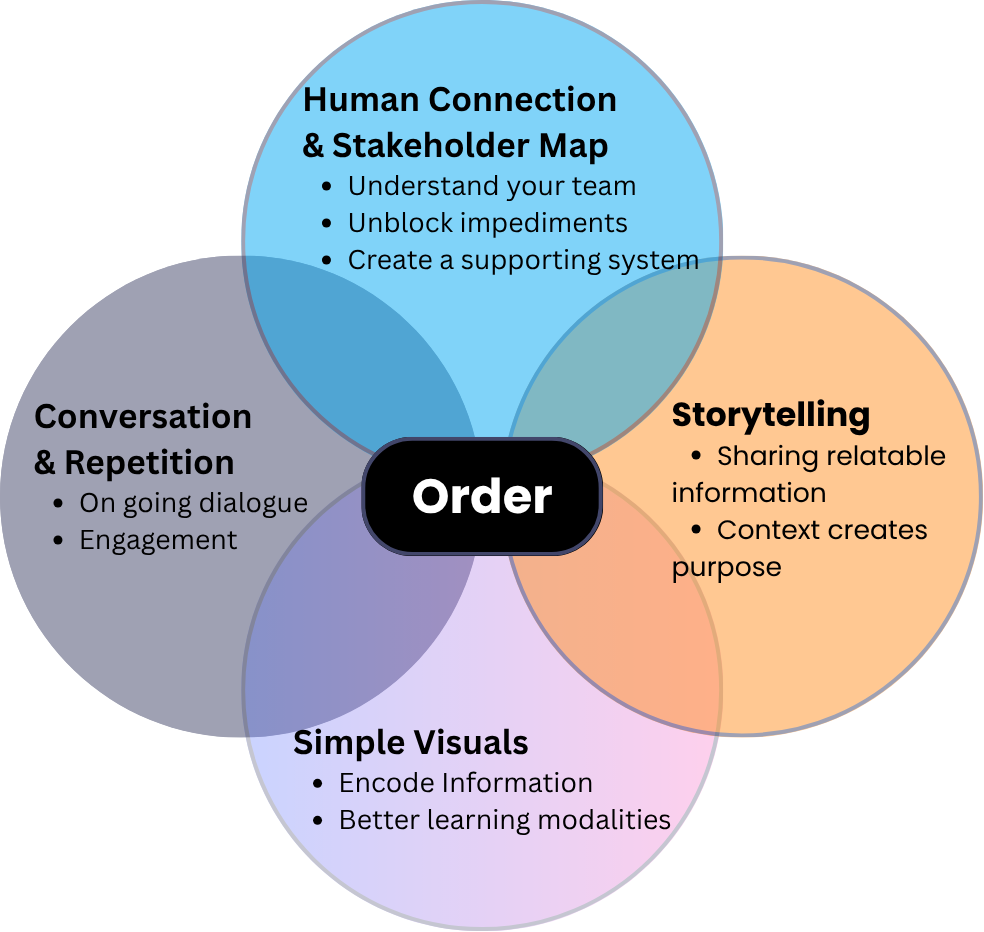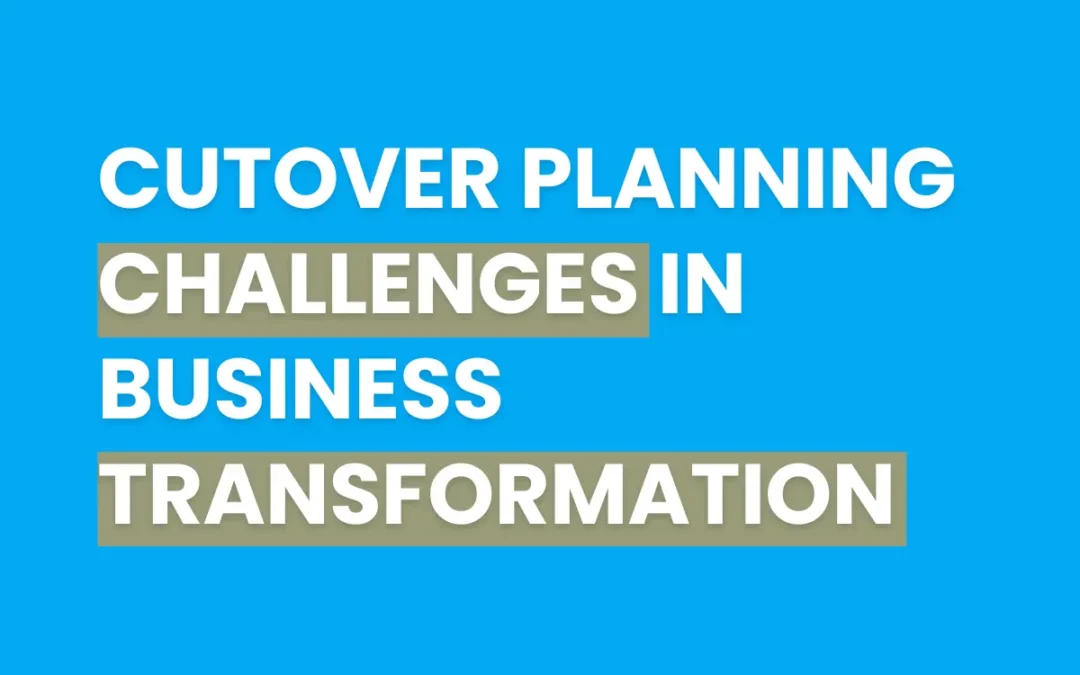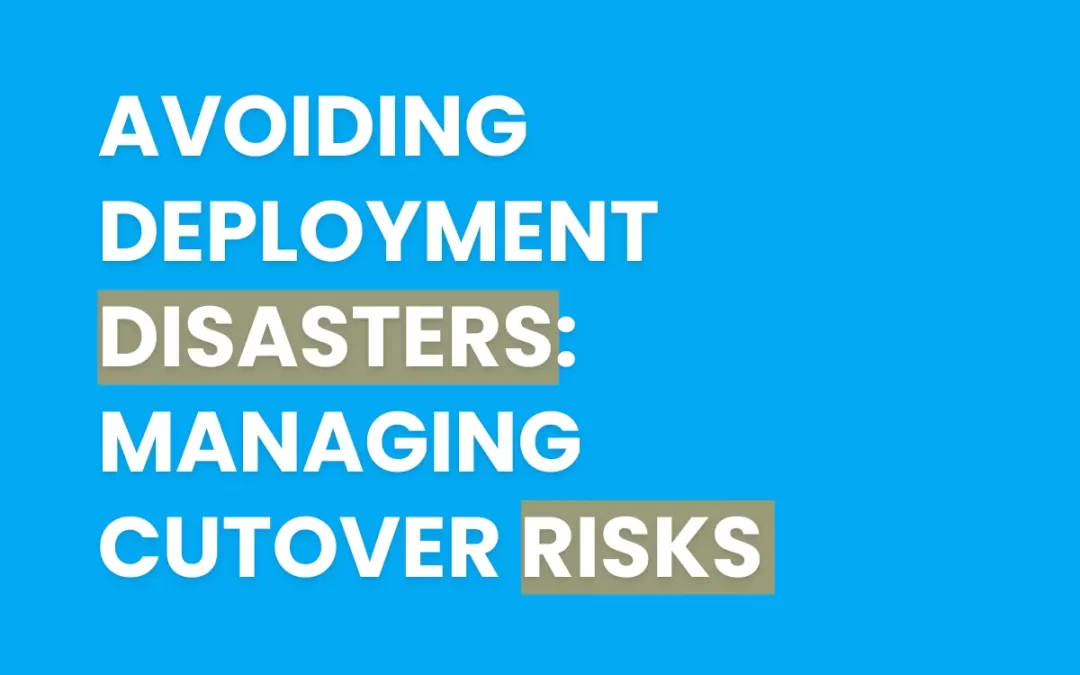The Critical Role of Data Migration in Seamless Cutovers: A Guide to Success

In the realm of project management, a successful cutover is a pivotal moment that can significantly impact an organization’s operations and success.
At the heart of this transition lies data migration, a critical process that, when executed effectively, ensures a seamless cutover.
This article delves into the essential role of data migration in cutover management, providing insights and best practices for project managers and program managers navigating this complex terrain.
Understanding Data Migration in Cutover Management
Data migration involves the transfer of data between different types of storage, formats, or systems.
In the context of cutover management, it is the linchpin that ensures the new system is populated with accurate and complete data, ready for go-live.
Here’s why data migration is indispensable:
– Ensures Data Integrity: Accurate and consistent data is crucial for the new system to function correctly. Data migration processes must ensure that data is transferred without loss or corruption.
– Minimizes Downtime: Efficient data migration reduces the time during which systems are offline, minimizing disruptions to business operations.
– Supports Decision-Making: Reliable data migration enables stakeholders to make informed decisions based on accurate data, both during and after the cutover.
Key Steps in Data Migration for Cutover Success
Executing a successful data migration requires meticulous planning and execution.
Here are the key steps involved:
Assessment and Planning:
– Data Audit: Conduct a thorough audit of existing data to understand its structure, volume, and quality.
– Define Objectives: Clearly outline the goals of the data migration, including what data needs to be migrated and why.
– Risk Assessment: Identify potential risks and develop contingency plans to mitigate them.
Designing the Migration Strategy:
– Choose the Right Tools: Select appropriate tools and technologies for data extraction, transformation, and loading (ETL).
– Mapping Data: Create detailed maps of how data will transition from the old system to the new, ensuring compatibility and consistency.
– Backup Plan: Establish robust backup and recovery procedures to safeguard data during migration.
Execution:
– Data Cleansing: Clean and standardize data to remove duplicates, correct errors, and ensure consistency.
– Migration: Execute the data transfer according to the planned strategy, monitoring progress closely.
– Validation: Verify the migrated data for accuracy and completeness, ensuring it meets the defined criteria.
Post-Migration Activities:
– Testing: Conduct thorough testing to ensure the new system functions correctly with the migrated data.
– User Training: Provide training and support to users to familiarize them with the new system and data structure.
– Monitoring: Continuously monitor the system post-migration to address any issues promptly.
Best Practices for Effective Data Migration
To ensure a seamless cutover, consider these best practices for data migration:
– Start Early: Begin planning data migration well in advance to allow ample time for addressing unforeseen challenges.
– Engage Stakeholders: Involve stakeholders from various departments to ensure all data needs are considered and addressed.
– Prioritize Data Security: Implement stringent security measures to protect data during migration, including encryption and access controls.
– Document Everything: Maintain comprehensive documentation of the migration process, including decisions made, steps taken, and outcomes achieved.
– Conduct Dry Runs: Perform trial migrations to identify and resolve potential issues before the actual cutover.
Common Challenges and Solutions in Data Migration
Data migration is not without its challenges. Here are some common issues and strategies to overcome them:
Data Loss or Corruption:
? Solution: Implement robust backup and recovery processes, and use data validation tools to ensure data integrity.
Incompatible Data Formats:
? Solution: Develop detailed data mapping and transformation plans to ensure compatibility between systems.
Unexpected Downtime:
? Solution: Plan for contingencies and have fallback systems in place to minimize downtime.
Resistance to Change:
? Solution: Provide comprehensive training and support to users to facilitate a smooth transition to the new system.
Conclusion
Data migration is a cornerstone of successful cutover management.
By understanding its critical role and implementing best practices, project teams can ensure a seamless transition to new systems, minimizing risks and maximizing benefits.
Embrace data migration as a strategic component of the cutover strategy to drive project success and organizational growth.



